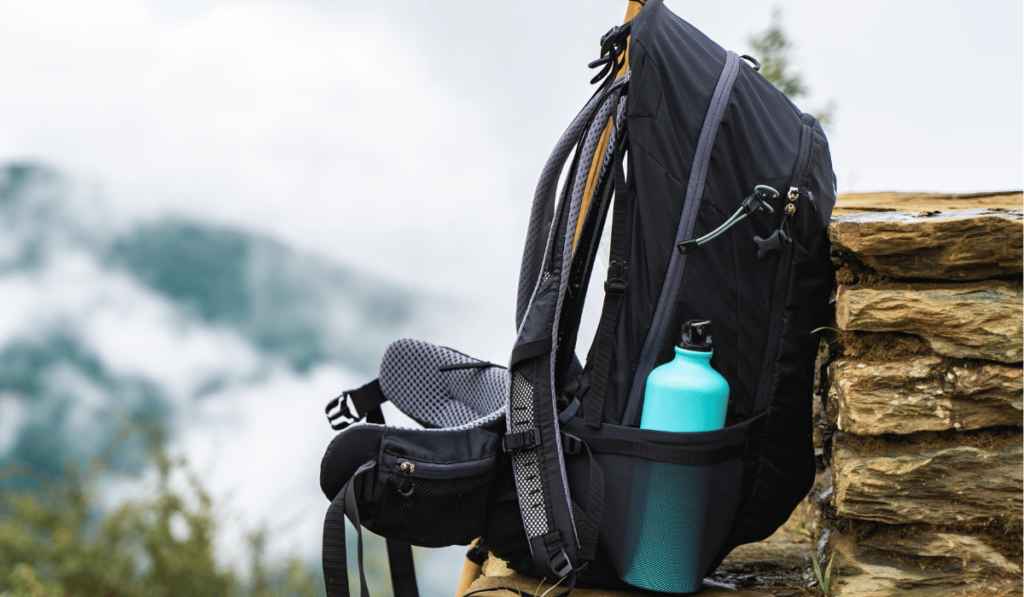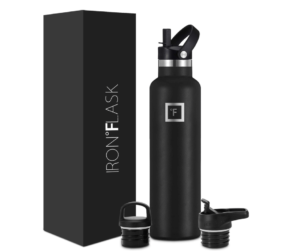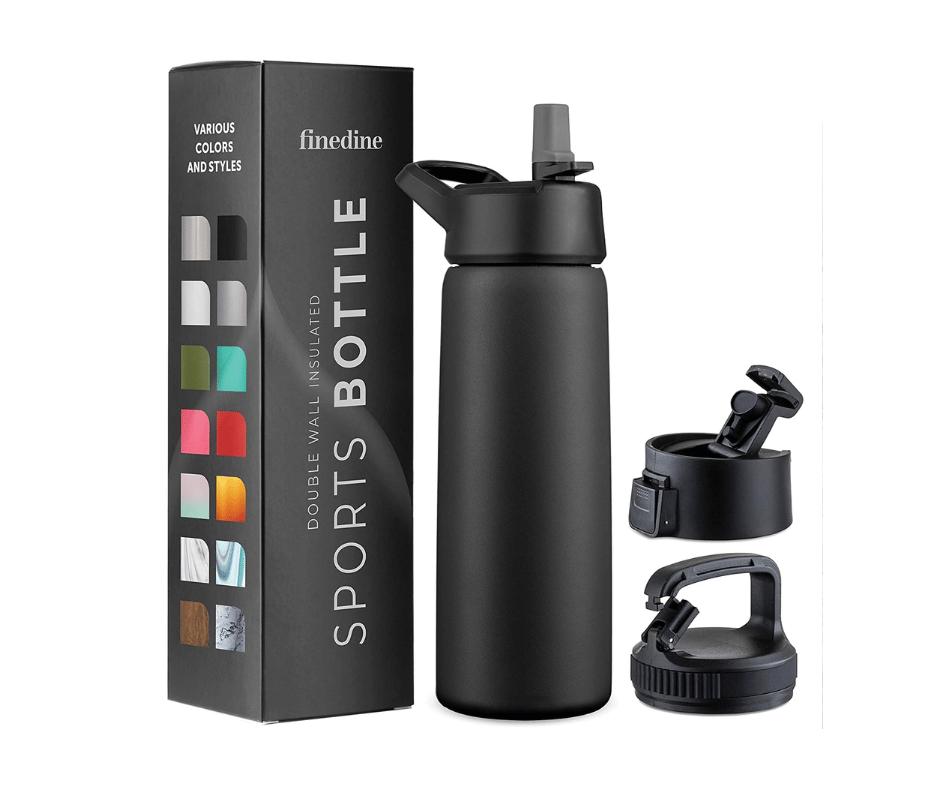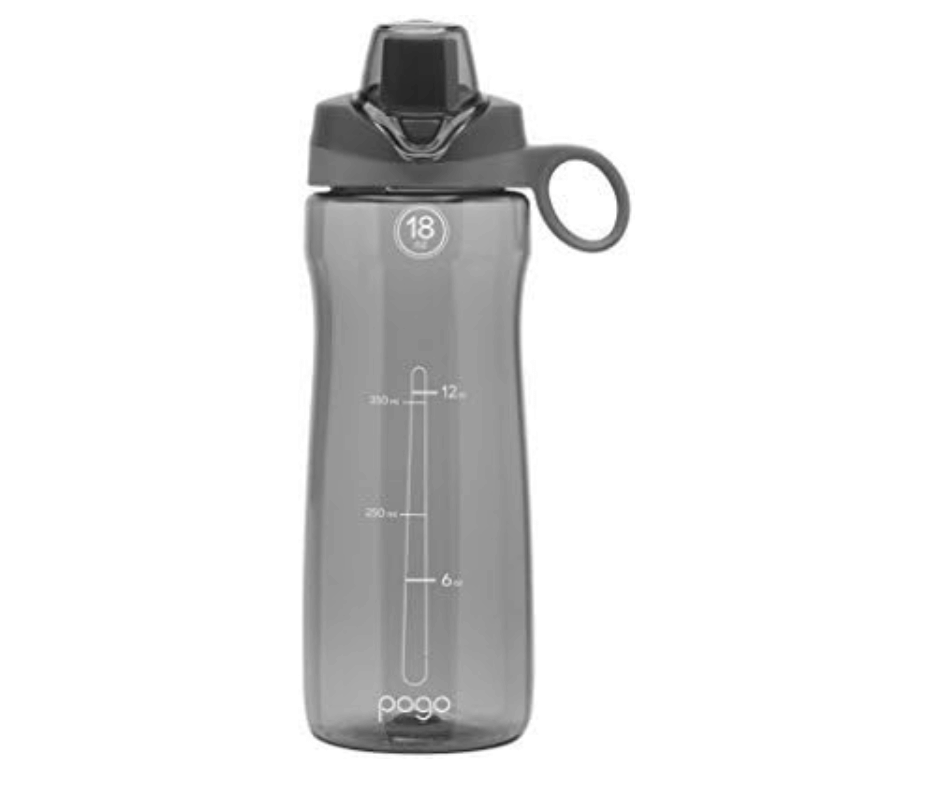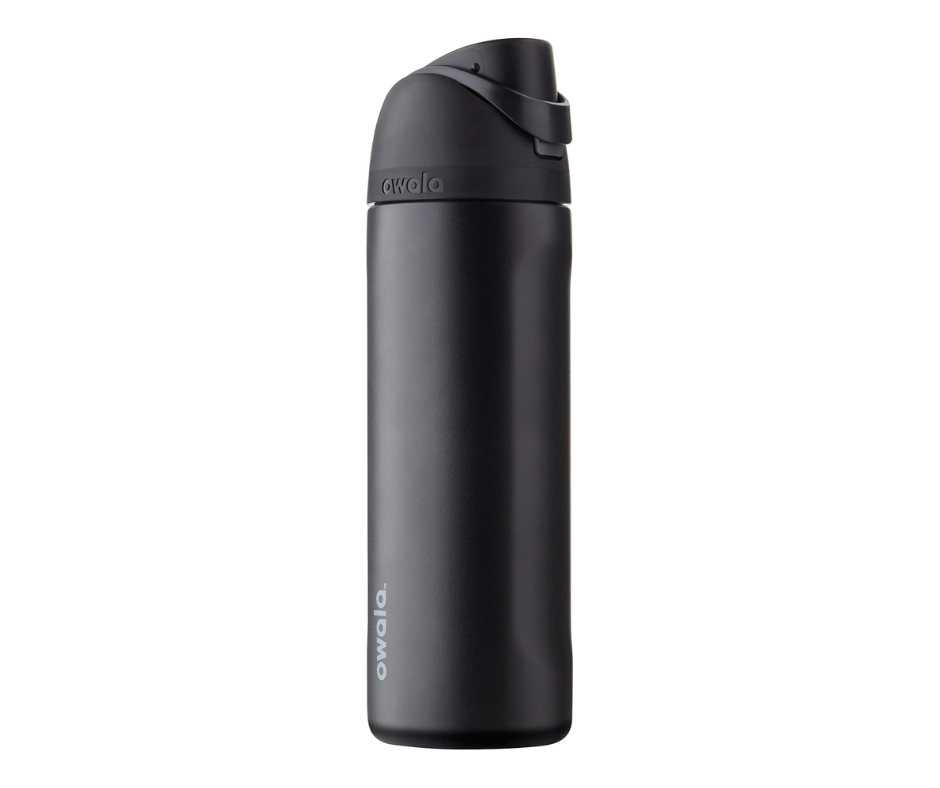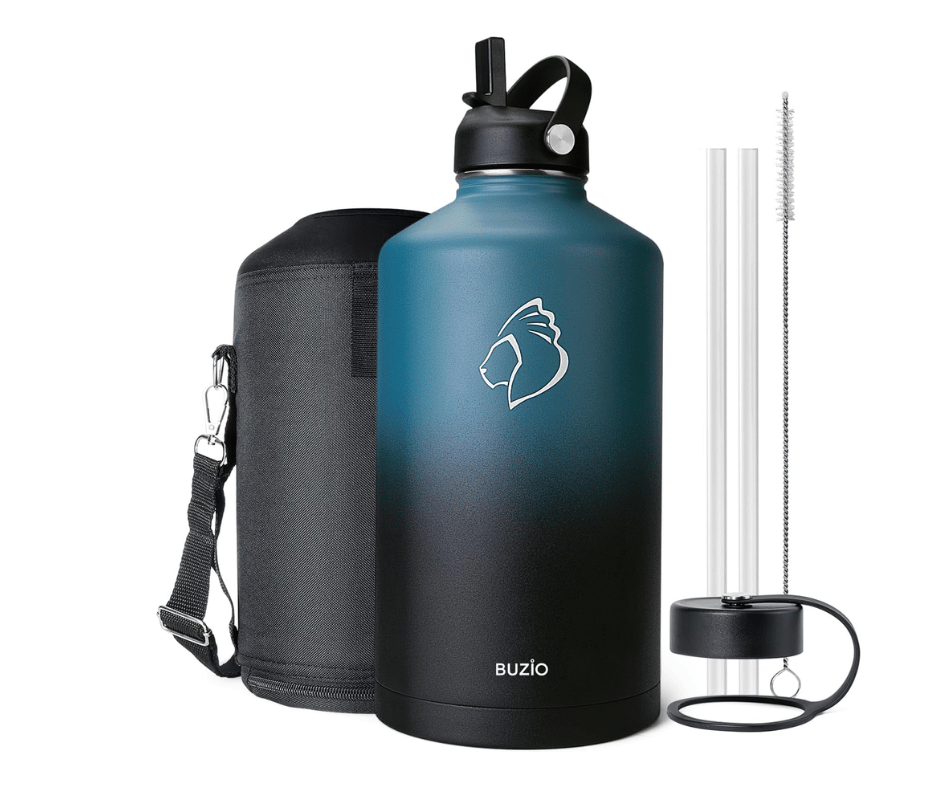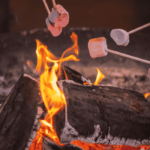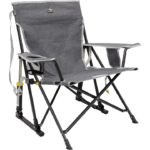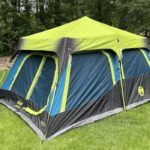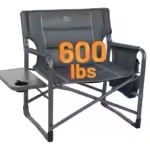Good camping or backpacking gear will surely immerse your joy in outdoor recreation. Most of the time, I found that backpacking enthusiasts suffer during their camping days due to poor backpacking gear. However, a good water bottle is a must among all the backpacking gear. If your water bottle is too sturdy but big and heavy, then it’s undoubtedly not suitable for your backpacking trip. Again, if the water bottle is light but poor in quality, it may leak anytime throughout the trip and will not be the right choice for robust use. Considering all the issues, I tried to find the best water bottle for backpacking for you among the countless available brands. I tried to balance all the features like size, sturdiness, build quality, and design.
In this article, I sorted out and reviewed the 05 best water bottles for backpacking on the market. After reading the article, you will not be confused about choosing the right water bottle for your next backpacking or camping trip. Without further ado, let’s dive deep into the article.
05 Best Water Bottles FOR BACKPACKING
Water Bottle Comparison
| Feature | FineDine | Pogo | BUZIO | Owala | IRON °FLASK |
|---|---|---|---|---|---|
| Capacity | 750 Milliliters | 18 Ounces | 1 Gallon (128 oz) | 24 Fluid Ounces | 24 Ounces |
| Color | Inky Raven Black | Grey | Indigo Crush | Very Very Dark | Midnight Black |
| Material | Stainless Steel | Plastic | Stainless Steel | Stainless Steel | Stainless Steel |
| Special Features | Cold 24 Hours, Lightweight, Leakproof, Dishwasher Safe, Hot 12 Hours, Spillproof | Wide Mouth, Leak Proof, Dishwasher Safe, Carrying Loop | Double Wall, Insulated, Straw | BPA-free | BPA Free, Eco Friendly, Leakproof, Double Wall |
| Item Weight | 13 ounces | 3.84 ounces | 3.85 pounds | 13.6 ounces | 10.88 ounces |
| Product Dimensions (WxH) | 13.7" x 3.78" | 4" x 8.5" | 2.16" x 12.08" | 3.24" x 10.68" | 1.9" x 10.1" |
| Dishwasher Safe | Yes | Yes | No | Yes | No |
| Best Sellers Rank | 248 in Sports & Outdoors | 326 in Sports & Outdoors | 326 in Sports & Outdoors | 2 in Kitchen & Dining | 2 in Kitchen & Dining |
1. IRON °FLASK Camping & Hiking Hydration Flask
Brand IRON °FLASK
Capacity 1.5 Pounds
Color Midnight Black
Recommended Uses For Product Water
Special Feature BPA Free, Eco Friendly, Leakproof, Double Wall
Our first choice for you is the IRON °FLASK Hydration Flask. These bottles are the best, hands down, for your backpacking or any outdoor activities. The most impressive feature is how cold it keeps the water. We tried the bottle’s heat insulation capacity, and I was amazed. It could keep the water cool for almost up to 24 hours. Yes, the temperature increased, but even though it is below the ambient, we can say it is crisp and relaxed indeed. If I talk about the build quality and sturdiness, it can undoubtedly beat any available bottles on the market. This bottle has been tossed around, carried in the outside backpack pocket (then the backpack gets thrown to the floor), dropped, knocked off, etc., and is still in perfectly usable condition. I am amazed at how well it’s held up and the length of time it keeps drinks cold.
You can purchase the extra silicone boot for the bottom, a neoprene cover, or any additional protection so it would easily fit in your lunchbox or backpack side pocket. These bottles are available in three different tops. I tried the spout, but the kit also included the straw top with two straws and just a standard top. Due to its moderate shape, It fits well in the car cup holder. The screw-on lid is leakproof and easy to unscrew in the car. I liked that it didn’t need any straws. Its lightweight feature will not add extra burden to your backpack. The bottle is available in numerous colors, sheds, and prints. Choose the one that matches your vibe. The Iron Flask Hydration water bottle is the best budget for your next backpacking.
2. Owala FreeSip Insulated Stainless Steel Water Bottle
Brand Owala
Capacity 24 Fluid Ounces
Color Very Very Dark
Recommended Water
Special Feature Bpa-free
From my personal experience, I can say the Owala FreeSip Water Bottle is exceptional. It combines functionality, style, and convenience. If you know someone who values staying hydrated throughout the day during scorching summer, I recommend this water bottle. Regarding heat insulation, the bottle can keep the water cold for almost 24 hours and hot for 12 hours. I didn’t get any spills or droplets.
The spout of this bottle provides the most satisfying feel of a “sip.” Whether you are working out, driving, or simply lounging by the pool, the Freesip spout will have your back with style and satisfaction. Due to its compact design, the bottle easily fits in the cardholder. Its lightweight and sturdiness make it a balanced choice for staying hydrated during backpacking days or any outdoor activities.
3. BUZIO 1 Gallon Water Bottle
Brand BUZIO
Capacity 8 Pounds
Color Indigo Crush
Recommended Uses For Product Water, Tea, Coffee
Unique Feature: Double Wall, Insulated, Straw
If you have many people during your backpacking, the overall water demand is high, or you want to keep enough water storage for the whole day, then BUZIO 1 Gallon water bottle is the perfect choice. The bottle is made of 100% nontoxic BPA-free plastic and food-grade 18/8 stainless steel, ensuring safe water storage. The durable stainless steel construction withstands outdoor conditions, accidental tosses, and robust uses. A large amount of water can cover your day’s demand with a single refill. Regarding thermal capacity, the bottle features unique thermo armor technology, which keeps beverages and water cold for up to 48 hours and hot for 24 hours. This thermal time limit capacity is higher than any other available bottle in the market.
The straw handle lid design is very user-friendly, allowing effortless drinking without the need to unscrew the lid completely. The wide mouth opening makes it easy to clean and accommodates ice cubes for cold drinks. The durable stainless steel construction withstands outdoor conditions and accidental drops, maintaining its sleek appearance and functionality.
The only drawback of the bottle is its vast size, which is easily compensated for by its water storage capacity. The price might be slightly higher than other bottles. Still, considering the size and enhanced period temperature maintenance capacity, it’s worth choosing.
4. Pogo Plastic Water Bottle
Brand Pogo
Material Plastic
Bottle Type Water Bottle
Color Grey
Capacity 1.1 Pounds
Suppose you are searching for a low-budget but high-quality water bottle for your backpacking or camping. In that case, I will recommend Pogo Plastic Water Bottle. However, using a plastic bottle for a long time is difficult due to its low build quality and material quality. Again, it’s also recommended not to use a plastic bottle for the most extended period, which may cause health issues. Considering all the problems, if you want to buy a budget good quality water bottle and you intend to use the bottle for a short period, you can undoubtedly go for POGO. I found it best compared to all other plastic water bottles available.
The principal privilege of a plastic bottle is that it is very lightweight compared to steel-built bottles. The intelligent shape of the Pogo will fit anywhere in your backpack or even in the pocket of the camping chairs. This bottle has a lid that covers the straw, which is perfect for keeping it clean. POGO water bottles come in various colors, which is beautiful; the bottle’s design is charming and elegant. The bottle Does not leak when tipped over. Though it is made of plastic, POGO has a durable built quality that defends against leakage of silly tosses or drops. This bottle has a lid that covers the straw, which is perfect for keeping it clean. Overall, the Pogo plastic water bottle is a low-budget value for money for any backpacker or outdoor enthusiast.
5. FineDine Triple Walled Water Bottles
Brand FineDine
Capacity 750 Milliliters
Color Inky Raven Black
Recommended Uses For Product Water, Juice, Iced Tea
Unique Feature: Cold 24 Hours, Lightweight, Leakproof, Dishwasher Safe, Hot 12 Hours, Spillproof
FineDine water bottles are highly praised for their affordability, durability, and excellent heat insulation capacity. This bottle can keep the water cold overnight and even under warm sun for up to 12 hours. The bottles come with multiple lids, which makes them versatile and easy to use. The simple design and sleek look, along with the sturdy build, will amaze you. The smart shape and size will fit easily in your car holder and camping chairs.
When compared in price, these bottles are easily a bit more expensive brands in terms of insulation and durability. Again, the bottle is made of eco-friendly material, so you don’t have to worry about the environment or your health. Considering all that, FineDine triple-walled insulated water bottles can be your perfect pick within budget to keep you hydrated throughout your backpacking.
What to look for in a backpacking water bottle
Material
Several materials are used in making water bottles, such as Stainless steel, BPA-free plastic, aluminum, and Glass. Depending on the materials used, the built quality, weight, toughness, longevity, and price vary.
The glass material is the healthiest for storing water or any beverage. Glass bottles don’t affect the flavor; thus, water contains its taste. There is no worry of any chemical reaction between Glass and water as plastic bottles have in the past. However, due to their brittleness, Glass bottles are not perfect for hiking, backpacking, or outdoor use. There is always the risk of breaking a glass bottle just by a silly toss or drop. Furthermore, glass bottles have inferior heat insulation capacity. Considering all the issues and health safety of glass materials, some brands make stainless steel bottles with a glass layer inside where the water only touches the glass surface.
BPA-free refers to products that do not contain traces of Bisphenol-A. BPA-free plastic bottles are usually found on low to medium budgets. This type of bottle is prevalent among beginner-level, low-budget camping enthusiasts and outdoor activists. Nalhene is a trendy bottle for this type. But nowadays, many other companies have come forward to make such bottles that can sustain, like Nalgene, using recycled plastics. Same as glass bottles, plastic bottles also can’t keep water warm or cold for a long time.
Stainless steel bottles are mainly made of food-grade 18/8 stainless steel. Most of the stainless steel bottles are made with insulating features. They make a double or triple layer of steel where the air is sealed between them. As air is not a suitable medium of heat. So the inner heat of the bottle can’t come outside, and the outer heat can rarely go inside. As a result, the water inside the bottle remains cool or warm for a long time. Conversely, as steel has much more weight than plastic and Glass, stainless steel bottles are heavier and more durable than plastic and glass bottles.
Durability
Durability is an essential feature of a water bottle. Though no water bottle on the market is fully resistant to wear and tear, There is nothing more depressing than a broken, cracked, or leaked bottle during backpacking or hiking. While buying, go for bottles with some protection cover to save them from external dents due to frequent drops or tosses. For example, a few glass bottles have silicon or tick fabric covers on them. I prefer stainless steel bottles mostly to aluminum water bottles, my own experience. Aluminum bottles may get dents or scuffs more easily than stainless steel bottles.
Weight
We all backpackers are always highly concerned about weight during our backpacking plans. Here, the weight of the water bottle matters as you will be carrying it throughout your backpacking or hiking. I personally am very concerned about the weight of my water bottle. I always try to carry light water bottles like Iron Flask.
For normal short-term outdoor activities, I prefer lightweight plastic bottles like Pogo. But whenever it comes to activities like backpacking or camping for days, I must go for stainless steel bottles. On the other hand, if the weather is cool or hot, I prefer insulated stainless steel bottles. I try to balance the weight, outdoor temperature, and outdoor activities when choosing a bottle.
Capacity
Carrying the right amount of water while backpacking or hiking is vital for your health and comfort. A person should drink 4 liters of water daily for a healthy life. During hiking or backpacking, the source of water is reduced. So, for a healthy body, you must carry at least 2 liters of water with you for journey safety. You can pick the BOUZI gallon bottle if you have enough space or take two or three separate bottles.
I always try to carry two or three bottles, two of which are refilled with fresh water and another with a beverage or energy drink, during my backpacking. Always try to refill your bottle on the go whenever you get a freshwater source. It will keep you worry-free.
Insulation
The purpose of double-walled stainless steel bottles is to stop heat transfer by acting as an insulator between the two layers. The thing is, hot water remains hot for a long time, and cold water remains cold for a long time.
Liquids can be kept in insulated bottles at their original temperature for a minimum of 24 hours and sometimes even longer. This design is great for carrying hot liquids like coffee or soup on a hike. In the same way, to enjoy cold water on a hot day, you can use insulated bottles and add some ice cubes to the water.
Leakproof design
I always try to search for a bottle with a leakproof design because I’ve had many experiences discovering a soggy bag or a dripping backseat in my car after a bottle has leaked. No matter how adorable it is, I wouldn’t take the well-known, expensive, and lucrative water bottle because it leaks. An essential component of selecting a bottle is having faith that it will hold its contents when flung into a backpack, placed into a pack’s side pocket, and generally turned upside down.
It’s vital to first read reviews and do a test at home. I found many bottles that leak even when the cap is tightened properly.
Ease of cleaning
Though we rarely use to clean our water bottles. However, a water bottle should be cleaned on a regular basis. While buying, ensure that the cap of the bottle is removable and offers enough space to enter your fingers or brushes to clean up. Previously, I used to clean with dishwashing soap using my fingers, but every time, I failed to reach the bottom of the bottle. Though I used to pour some soap water and rinse properly, dissatisfaction remained in my mind. To get rid of this, I started using a brush attached to a long stick to clean my bottles of mine. Sometimes, I use cleaning tabs and let the bottle sit in hot water with soap once a week.
Environmental impact
To save the planet and the environment, we should always contribute from our own place through our little things. Try to buy a bottle made of environmentally friendly materials, which will affect sustainability efforts. For example, Nalgene’s bottles are made from 50% recycled plastic. For other bottles, Stanley is focusing on making bottles from recycled stainless steel. Not only Stanely or Nalgene but many other companies are focusing on producing bottles in environmentally friendly ways.
Price
Water bottles for backpacking or camping come in a wide range of prices. Anyone with any budget can grab one for his outdoor adventures. An uninsulated or plastic bottle like POGO costs less than $15. On the other hand, you can go for a stainless steel high-insulation bottle for $25 and more. Other available accessories with the bottles may add an extra penny to the overall price.
Pros and cons of different Backpacking bottle materials
Stainless steel
Pros:
Insulated stainless steel can keep water, a beverage, or any liquid warm or hot for long periods of time, often up to and even over 24 hours and, in rare cases, up to 48 hours.
Cons:
Due to the material used, these bottles are heavy, especially those 40oz and above in size. Depending on the build quality and finishing, they can be impacted by scratches and dents. The build quality and the price increase rationally.
Plastic
Pros
Plastic water bottles are convenient for on-the-go hydration because they are lightweight and portable. Since they are often affordable, customers of all ranges can grab one. Plastic water bottles are less likely to break than glass bottles, so it is a safer option with a low budget. Plastic water bottles can be recycled, which might lessen adverse environmental effects.
Cons
Large volumes of plastic garbage wind up in landfills and the ocean due to improper recycling of plastic bottles, which significantly pollutes. Certain plastic bottles include BPA (Bisphenol A), a chemical that can contaminate water and lead to health problems. Again, Petroleum is a non-renewable resource used in producing plastic water bottles, contributing to its depletion. In addition, single-use plastic bottles are meant to be used just once; they encourage more wasteful and frequent purchasing.
Glass water bottle
Pros:
Glass water bottles are becoming increasingly common because of several significant advantages. One can bite into a glass bottle to ensure pure and safe drinking. The absence of dangerous substances like BPA and phthalates, frequently present in plastic bottles, is one of the Glass’s primary benefits. This indicates that the water in glass bottles keeps its natural flavor and is not contaminated. Glass may be recycled and reused endlessly without degrading its quality over time. Glass bottles are visually appealing because of their sleek, translucent designs, which give the user a sense of luxury. Users also like being able to readily check the water levels and make sure the bottle is clean.
Cons:
Glass water bottles also have disadvantages. Generally, they weigh more than metal or plastic substitutes. Glass is easily broken or shattered if flung or dropped. However, silicone or rubber sleeves that offer additional protection over the Glass can occasionally lessen this risk. However, these sleeves can get dirty, and cleaning them isn’t always straightforward. Last but not least, the initial and replacement costs of glass bottles are typically higher than those of plastic.
Silicone/Collapsible
Pros:
These bottles are highly packable and lightweight, making them ideal for activities like running or backpacking. Their compact design allows them to be stowed away easily in a pocket, small storage container, or the side pocket of the backpack.
Cons:
These bottles have a few drawbacks, too. If you drop or toss them uncarefully, they may collapse and lead to spills. You need to be very careful while using these bottles. Again, silicone is generally durable but not as strong as solid options like Glass or plastic. I once had a bottle develop a leak from an unknown puncture.
frequently Asked Question (FAQ)
Q. are water bottle caps or lids recyclable?
A. The plastic in the bottle caps is more valuable than the plastic used in making the body. Many recycling companies worldwide have their own equipment and technologies to remove the plastic cap and recycle it.
Q. which water bottle stays the cold longest
A. The thermal insulation capacity of a bottle actually fixes the time and how long it will keep the water cool inside. As no material is fully heat insulated at a time the water will come to the normal temperature. Now, a maximum of the available stainless steel insulated bottles in the market can keep water cold for up to 24 hours. Among the list we mentioned above the BUZIO 1 Gallon Water Bottle can keep the water cold for almost close to 48 hours.
Q. What size water bottle is best for backpacking?
A. The best water bottle size depends on your water demand and the length of the journey. It also depends on the space of your backpack. Overall according to our analysis if you are planning to go for a backpacking where the source of fresh water will be frequent like on average within every 4 hours then a 32 oz bottle will be a perfect one. But if the frequency is more than 04 hours then you should obviously take a bottle of more than 32 Oz according to the space in your backpack and LOAD carrying cPACITY.
Mustakim Hasan
As an engineer with a keen eye for detail, I combines their technical expertise with a fervent passion for the outdoors. At bestcampgears.com, I share in-depth reviews on the latest camping, outdoor, and sports products, offering readers valuable insights and reliable recommendations. Drawing from personal experiences and a love for nature, I also provides practical tips, tricks, and guidance to enhance your outdoor adventures. Whether you're a seasoned camper or a budding outdoor enthusiast, Bestcampgears's blog is your go-to resource for all things camping and outdoors.

Top 5 Best Heated Camping Chairs of 2024: Stay Warm and Comfortable Outdoors
I know it is very uncomfortable while your front part of the body is warm, but your backside is not. Where is camping sitting in front of a campfire it
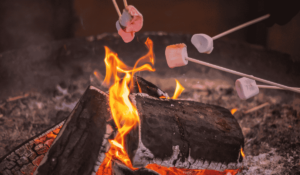
Essential campfire Checklict For your next camping trip
If you are a camping enthusiast, spending the night beside a campfire is likely your favorite moment during the whole camping experience. Having some BBQ over the campfire, singing a
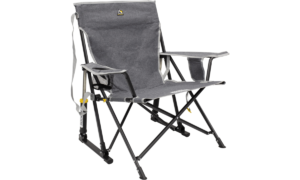
GCI Outdoor Rocker Camping Chair Review: Comfort Meets Adventure
Regarding camping gear, I’ve always believed in investing in comfort. After years of sitting on flimsy folding chairs around the campfire, I badly felt the need to upgrade. So, after
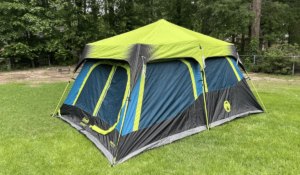
Coleman 8-Person Instant Tent Review: Built for Comfort and Durability
I recently brought the Coleman 8-Person Instant Tent on a camping trip, and it surpassed my expectations in both ease of setup and overall durability. This could be the right choice if
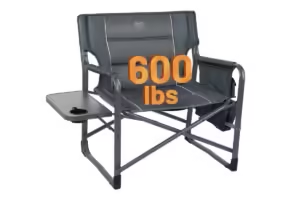
The Ultimate Guide to TIMBER RIDGE XXL Upgraded Oversized Directors Chairs
Finding the perfect outdoor chair that combines comfort, durability, and support can be daunting. The TIMBER RIDGE XXL Oversized Chair promises to meet these needs. This chair is a perfect

The Ultimate Guide to Car Camping Essentials for Beginners
Car camping can add joy to your soul while saving money from your pocket. I usually go tent camping to relax in nature during my free time or whenever I
